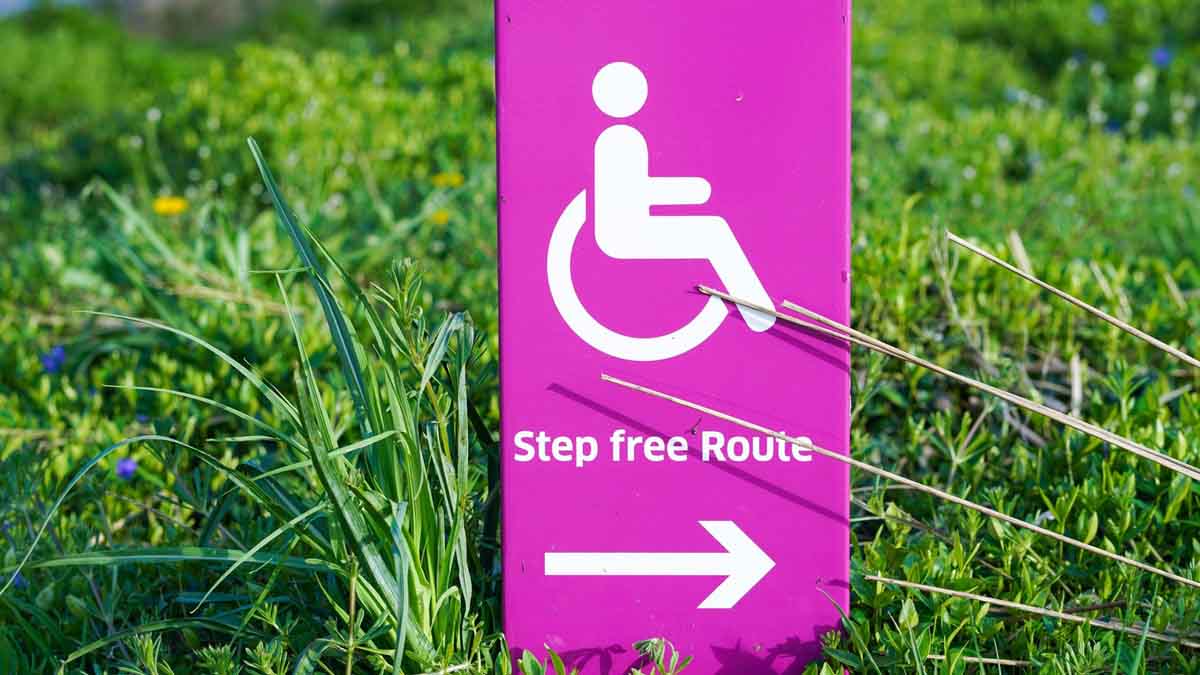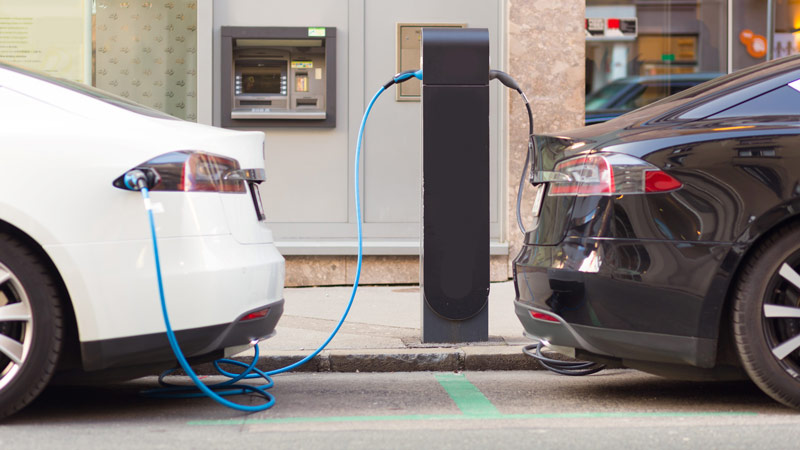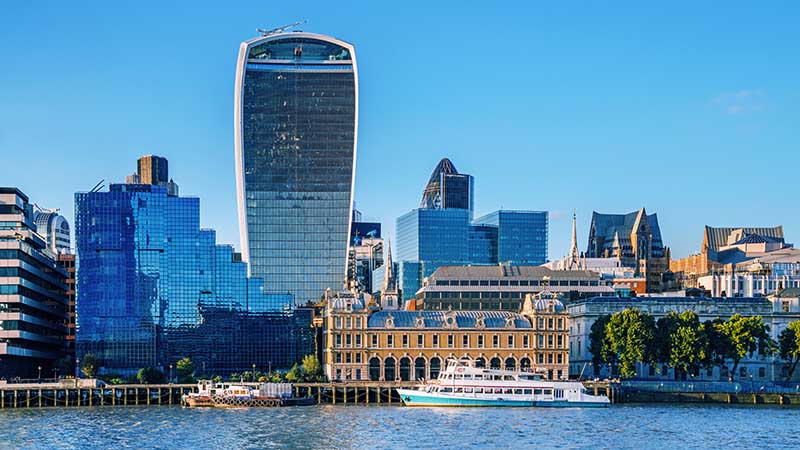Cities without barriers
While big cities are still struggling with their general accessibility, many smaller cities have already done everything to be accessible to all
Europe, the home of gray cobblestones and ancient castles, isn’t the most accessible continent in the world for people living with disabilities, in part due to its varied landscape and medieval heritage.

©WIRED
The European Commission estimates that one-fifth of the population of the EU will be living with a disability by 2020, with cities scrambling to embrace accessibility, not simply by bolting it on to existing infrastructure, but by including it by design. Many European cities are paying close attention to urban engineering and the use of assistive technology to improve their city’s overall accessibility for both residents and tourists.
While sprawling metropolises continue to grapple with accessibility, smaller cities have gone above and beyond and shown how a clever mix of design and technology can make our urban spaces open to all. To help move things along, every year since 2010 the EU has given one city the Access City Award, naming it the most accessible city in Europe, having prioritised accessibility in urban planning.
Here are five cities in Europe which have been made accessible thanks to clever uses of technology, design and engineering.
Breda, the Netherlands
Winner of the 2019 Access City Award, the medieval Dutch town of Breda is like many other European cities. It’s home to stretches of ancient cobblestone, which all add to the city’s charm, but for wheelchair users, cobblestones are an accessibility nightmare, with many people avoiding travelling down them altogether.
Breda, however, has achieved one of the biggest engineering feats in the realm of urban accessibility, by making historic cobbles accessible. The city has gone to great lengths to find a balance between maintaining its medieval aesthetic while still making it accessible for everyone. Throughout the streets of Breda, city planners have used machinery to pull up the inaccessible cobblestones. They’ve sliced them, flipped them over, and returned them to the ground. This allowed Breda to maintain its cobble aesthetic, while also making the pavements accessible for wheelchair users.
This was a big engineering feat for Breda as city planners weren’t able to pluck the cobblestones out by hand and had to use small devices in order to peel them from the ground, due to EU regulations.
“The cobbles were all round-tops,” says Wouter Schelvis, an accessibility advisor in Breda. “They removed these old cobblestones, they flip them over, and they sawed them in a way in which it still looks medieval.”
The gaps between the cobblestones were then filled in using a sweep-resistant joint filling, in order to make them as wheelchair-friendly as possible. Schelvis adds that the flipped-over, sliced cobblestones are mostly in the canal areas, and has made these previously off-limits areas accessible to everyone.
Rotterdam, the Netherlands
The city of Rotterdam is using digital technology to improve accessibility for wheelchair users and those with mobility issues. Rotterdam, which has guidelines in place to ensure that walking routes have no unevenness greater than three centimeters, enables residents to report any mobility pitfalls using the city’s Better Outdoors app. According to the municipality, any uneven pathing will be fixed within three days.
The app lets a person with a disability take a picture of the paving issue on their smartphone, tag it with their phone’s GPS, add a description and then send it off to Rotterdam’s municipality. The user is also able to track the progress of the report so that they know when it is fixed and safe to travel down.
Rotterdam also has a quick responders unit which is available 24 hours a day, for any paving issues or emergencies which affect people with disabilities. “In case of a dangerous or unsafe situation where disabled residents can’t find their way in a proper manner, we will take action within 24 hours,” says Brigitte Moratis, an officer at the Rotterdam municipality. “It is called our quick recovery team.”
The Better Outdoors app has been so successful that the developer of the app has begun rolling it out in other cities throughout the Netherlands.
Lyon, France
Every bus stop, 90 per cent of crossings and an estimated 200 public and private buildings – including local town halls, post offices, banks, insurance companies, shops and the two main train stations (Part-Dieu and Perrache) in Lyon are fitted with Okeenea’s sound beacons.
These sound beacons help guide visually impaired people in Lyon and can be activated with the use of a one-button remote control that is given for free to every visually impaired citizen in Lyon. When pressed, sound beacons within a ten-meter radius will make a verbal announcement. At bus stops and tram stops, for example, one button press will force the sound beacon to vocalize the next bus or tram to pull into the stop, another press will vocalize the destination, and a final press will vocalize the waiting time before the next bus or tram.
“For accessible pedestrian signals at crossings, when the green man is on, the devices play a non-verbal message compliant with French regulations, the same anywhere in France,” says Laurie Botte, export sales manager at Okeenea, the company that developed the technology. “When the red man is on, there's a message that says so and also reads out the street name.”
At buildings, the sound beacon will announce the name of the building plus the opening hours, making the city more accessible for residents with visual impairments. The sound beacons can also be activated with the use of Okeenea’s app.
Ljubljana, Slovenia
The Slovenian capital has featured in the EU’s Access City Award shortlist three times over the award’s ten-year history. But Ljubljana has also worked on creating an inclusive environment for tourists with disabilities.
The city has developed an app for wheelchair users, categorizing the most accessible hotspots, restaurants and hotels. But more interesting is the city’s introduction of Ljubljana’s SPEED3X wheelchair trailer attachments. These attachments, which let wheelchair users travel the city at 25 kilometers an hour and can be rented for free from the Slovenian Tourist Information Center, have been made by Ljubljana-based RTS Medical.
The attachments fit onto the front of any kind of wheelchair and let tourists see the city alongside their friends or family on bikes using the city’s network of cycle lanes. The trailer also has a range of 40km, making it possible for people to explore even more of the city.
The trailer attachment joins other accessibility schemes like Ljubljana’s urban electric train, which is fully accessible for both wheelchair users and those with visual impairments. The free electric train allows tourists with visual impairments the chance to experience the city with a free audio guide.
Chester, United Kingdom
Three kilometers of 700-year-old medieval Roman and Saxon walls stretch along the outside of Chester. It’s no easy task making a national archaeological heritage site accessible, but that’s exactly what planners did.
The city, which was the winner of the 2017 Access City Award, has managed to make those ancient walls as wheelchair-accessible as possible, within regulatory restrictions. Instead of having to access those walls using stairs, the city built in cascading ramps which lead up to the walls via access points.
The council also smoothed out the surfaces of the access points and put in additional handrails and tactile paving for the areas where the walls couldn’t be made accessible. But more than half of those access points are now accessible by ramp. There are 11 access points, with six of those access points being built with ramps for easy access for wheelchair users. The elevated walkways, called Rows, are also fitted with an escalator, as well as lifts. It was a tricky engineering development because some of the steps are Grade I listed structures, so Chester’s city planners had to choose the access points wisely.
The information panels are also accessible for wheelchair users, having been lowered to the right height. Other council-wide schemes include the introduction of fully accessible buses and taxis, making Chester one of the most accessible cities in the UK.
About the author
Alex Lee is a staff writer at WIRED.UK
Our great sense of curiosity at Vontobel means we are attentively following scientific research in many key areas. This helps us recognize new investment opportunities early on. That’s why our thematic portfolios and thematic investments also reflect megatrends such as digitization, as we consider companies that are making valuable contributions to solving global challenges.
I am interested in thematic investments
I am interested in thematic funds
Who are we? How do we live today? And how will the climate change our lives? How the future will unfold is preoccupying society more than ever, with engineers, doctors, politicians – each one of us, in fact – seeking answers. This report on barrier free cities is one of many contributions that shed light on the theme “Mobility” from a new, inspiring perspective. We are publishing them here as part of our series “Impact”.








